
Selecting the right dehumidifier is a minefield for many people as brands send out conflicting information trying to persuade consumers to buy. Do you need a desiccant dehumidifier or a compressor model? Our sales are fairly even between the two technologies which puts us in an unique situation to provide unbiased advice.
There are two types of dehumidifiers: desiccant and compressor. At Meaco, we manufacture and sell an equal amount of both types of technologies, so we are uniquely placed to give unbiased advice on which would be best for your needs. Both types of appliance will help prevent mould and damp by extracting water.
Because there are two different types of dehumidifier technology on the market, confusion comes when someone has to decide which one to buy. Below is a cut-and-keep guide to making the right choice.
Generally speaking, a compressor dehumidifier is suitable for a room with an air temperature above 10°C, and a desiccant dehumidifier is more suited for temperatures below 10°C.
So, there are 6 key factors which may help you decide whether a desiccant or compressor dehumidifier suits you best:
- What is the temperature of the space you want to use your dehumidifier?
- Will a dehumidifier keep the room warm and dry?
- Can a dehumidifier dry laundry?
- How much does a dehumidifier weigh and how easy is it to move around?
- How much does a dehumidifier cost to run?
- And how much noise does a dehumidifier generate?
Compressor dehumidifiers are the established way of doing things having been around for 50+ years. They work by creating a cold surface and when the warm, damp air from within the room comes into contact with the cold surface, condensation forms, and the water is removed from the air. Jump to the comparison table.
A desiccant dehumidifier has no compressor and does not use a cold surface to extract the excess moisture from the air. Instead, it has a desiccant wheel that absorbs the moisture from the air, in a similar way to a sponge. The desiccant is regenerated by an internal heater and fan so that the process can be repeated time and time again. Jump to the comparison table.
Main applications to consider when choosing between dehumidifier types:
Which type of dehumidifier is best for cold or cooler conditions (temperature is below 10°C)? When the room air temperature is likely to fall below 10°C, for example in a conservatory, garage or colder home, a desiccant dehumidifier is the most suitable type. This is because, desiccant dehumidifiers maintain a consistent performance, regardless of the surrounding temperature.
Compressor dehumidifiers, on the other hand, need the inside of the machine to be colder than the air within the room in order for it to perform correctly. So, the colder the room, the harder the dehumidifier has to work to create that cold surface. As the temperature starts to fall down towards 10°C, the chances are that the inside of the dehumidifier will get close to freezing, increasing the chances of ice forming on the dehumidifier’s cooling coils. Below 10°C, compressor dehumidifiers are programmed to spend more and more of their time defrosting themselves rather than dehumidifying.
Pictured: Desiccant dehumidifiers are recommended for cold rooms although the MeacoDry Arete® One compressor dehumidifier also works well.
As a rule of thumb we would always recommend a desiccant dehumidifier if the room temperature is below 10°C, a desiccant dehumidifier or a large compressor dehumidifier (either a 20L or 25L) if the room temperature is between 10°C and 15°C and any type of dehumidifier, including a small compressor dehumidifier (10L or 12L), if the room temperature is above 15°C.
Below 10°C: desiccant dehumidifier only
Between 10°C and 15°C: desiccant dehumidifier or a large compressor dehumidifier (20L or 25L)
Above 15°C: desiccant dehumidifier or any size compressor dehumidifier (10L, 12L, 20L or 25L)
Small compressor dehumidifiers used in rooms below 15°C and large compressor dehumidifiers used in rooms below 10°C will not perform well. Having said that, you will see that both of the larger MeacoDry Arete® One dehumidifiers are Which? Best Buys and in their reviews found that they both performed better than expected at 10°C and that the 25L model was exceptional. Desiccant dehumidifiers (such as the Meaco DD8L) will perform the same regardless of the room temperature.
Desiccant dehumidifiers are recommended for cold rooms although the Arete® One 20L and 25L compressor dehumidifiers also work well, as you can see here in the classic car garage.

Which type of dehumidifier is best to keep your house warm and dry?
Most customers are looking for a dehumidifier to keep their home condensation free. Or to tackle the problem of too much humidity in the air causing damp and mould. They need a dehumidifier that will take excess moisture out of the air, and some also like it to warm up the room where it’s operating.
Both compressor and desiccant dehumidifiers will warm the air up slightly – the air naturally warms up as it passes through the dehumidifier. The air coming out of the compressor dehumidifier will be about 2°C warmer. This will not warm up the room the dehumidifier is being used in (and will actually feel cold to touch! This is because the air is moving). However,the air coming out of a desiccant dehumidifier will be about 10-12°C warmer and will have a significant impact on the temperature of the room its being used in – think of it as a 2 in 1 dehumidifier and heater!
So, if you are putting the dehumidifier into a hallway that is on the chilly side, the desiccant dehumidifier makes sense. If the hallway is already nice and toasty then the compressor dehumidifier is the correct option.
So, for a cold room – the winner is desiccant. For a warm room – the winner is compressor.
Is a desiccant dehumidifier good for drying laundry?
Drying washing indoors is one of the most common reasons why homes suffer from condensation, damp and mould. Laundry dries because the air around it is drier than itself. So the washing gives up the moisture in order to be in equilibrium with its surroundings. However, the moisture from the laundry has to go somewhere and this leads to condensation, damp and mould. Using a dehumidifier not only creates a dry atmosphere and blows air across the wet washing speeding up its drying time, it also captures the excess moisture from the clothes and prevents it from causing problems in your house such as condensation, damp or mould.
Drying washing using a dehumidifier works in the same way as drying the laundry on a line in the summer – honest! The laundry dries fastest outside on a dry, warm, windy day. And the laundry inside will dry faster if the warm, dry air created by the dehumidifier hits the clothes.
Both desiccant and compressor dehumidifiers are good at drying laundry. A desiccant dehumidifier tends to have a larger top speed air flow than a compressor dehumidifier and the air coming out of the dehumidifier is warmer (giving it that extra edge).
The DD8L Zambezi has a unique low energy drying cycle for laundry which makes it the best desiccant for drying laundry, as well as a lourve which directs the airflow onto the clothes. Although compressor dehumidifiers don’t have the additional heat they are cheaper to run and therefore can dry a load of laundry at less of a cost than a desiccant. Many compress dehumidifiers, including our MeacoDry Arete® One range, have dedicated laundry modes to dry your laundry in 6 hours.
For drying washing, the winners are the DD8L Zambezi and for low cost drying the MeacoDry Arete® One range.
Pictured: Desiccant dehumidifiers can be used to dry washing cost-effectively.
Product features to consider before purchasing:
Planning on moving the dehumidifier around the house? You’ll need to know which weighs less, a desiccant or compressor dehumidifier.
However, there may be times when you want to move the dehumidifier around. For example, you might have built-in wardrobes in a bedroom that are prone to mould growth. You might have the dehumidifier upstairs on the landing but need to move it downstairs to dry the washing, or you might like to move it into a conservatory now and again or use it to dry out a poorly ventilated bathroom.
Compressors add about 6 kilograms to the weight of a dehumidifier, so carrying a desiccant dehumidifier around is a lot easier than carrying a compressor dehumidifier around. However, most compressor dehumidifiers come with castors, making them more portable.
Carrying your dehumidifier – the winner is desiccant.
Energy Consumption – how much does a dehumidifier cost to run?
Customers are understandably interested in how much it costs to run a dehumidifier. Compressor dehumidifiers are in general cheaper to run. However, a desiccant releases its extra energy as heat. So there will be a cost to run your dehumidifier, but you are getting heat back into your home, meaning you can reduce your central heating accordingly. And that has a positive knock-on effect on your bills. You have to decide if you want or need this additional warmth or if you just want the cheapest dehumidifier to run.
For example, in our compressor range, we have the Meaco Low Energy 12L Dehumidifier, running at just 4p / kWh as well as our MeacoDry ABC 12L, running at just 4p / hour based on 26.35p / kWh. That means, you can have the dehumidifier on 24 hours a day, maintaining your home humidity levels for just 96p per day.
So, for low energy and low cost operation – the winner is compressor dehumidifiers.
The good thing is, whichever dehumidifier you choose, a compressor or a desiccant, the dehumidifier will be removing cold, damp air from your home, meaning you don’t have to put your heating on as high – saving you money on your energy bills!
Noise levels – how much noise does a dehumidifier make?
This is an area where dehumidifiers have changed a lot over the past 5-10 years. It used to be the case that a desiccant dehumidifier on low fan speed was your quietest option, but a few years ago the MeacoDry ABC Range changed all of that with 10 and 12l models at just 36dB (close to the sound of a whisper). And then, we changed it again with the new Arete® One 10 and 12L compressor dehumidifiers which are even quieter at 35dB. So you can now buy a dehumidifier that is the quietest and cheapest to run.
For quiet operation, the winner is Meaco ABC 10L and 12L and MeacoDry Arete® One 10 and 12L Dehumidifier and Air Purifier. These dehumidifiers are all a whisper-quiet 35/36dB.
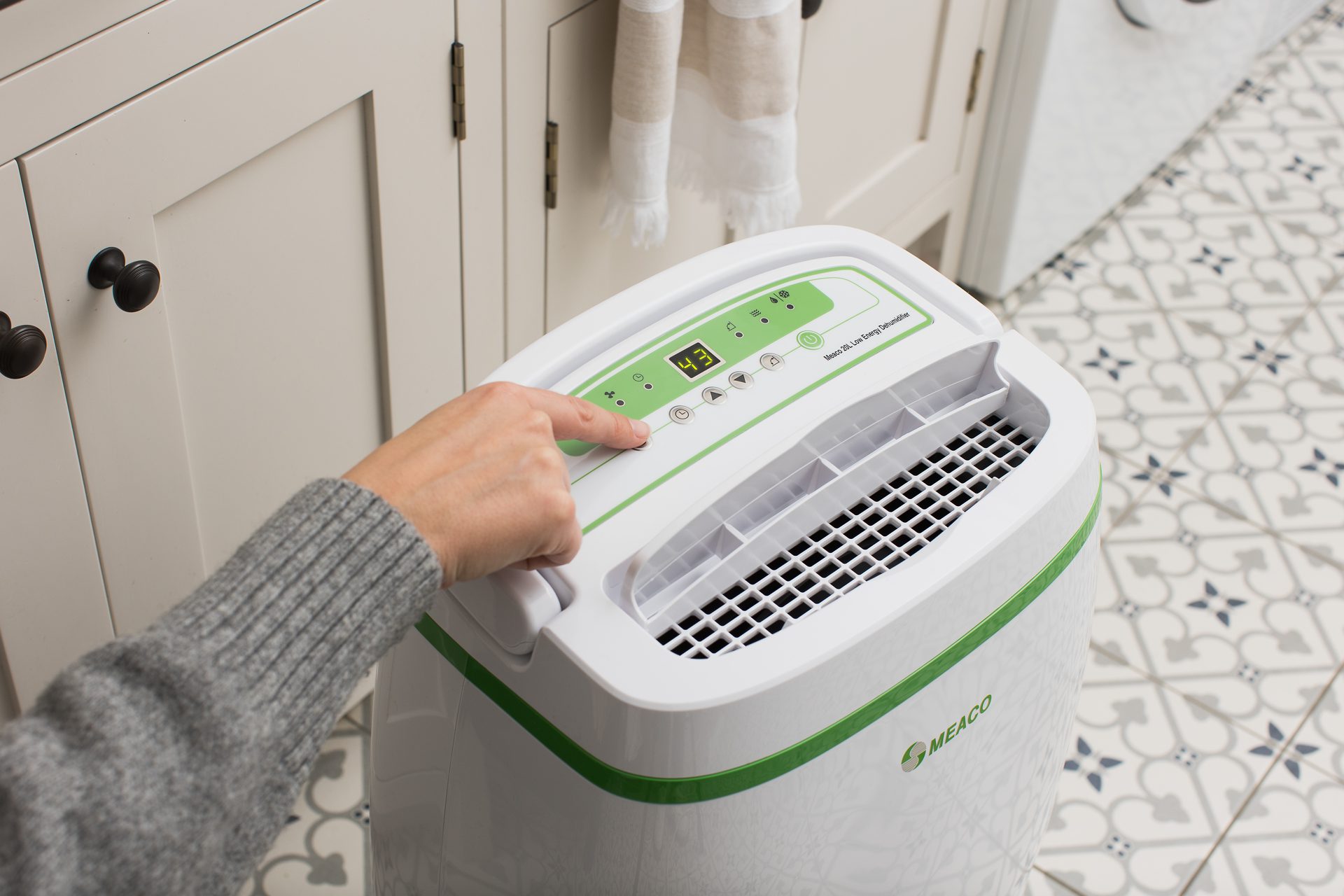
Which Dehumidifiers Can Do More Than Just Extract Moisture, Which Can Double Up As An Air Purifier As Well?
Many dehumidifiers can now be fitted with HEPA filters so they can purify the intake air as well as extracting moisture. At Meaco, we supply medical-grade H13 HEPA filters to selected compressor dehumidifiers. These can retain 99.75% particles as small as 0.3 micrometers in diameter, making it great for people with allergies like hayfever or other respiratory medical conditions such as asthma.
Because of the heat elements and sensitive parts of a desiccant dehumidifier, we do not supply things like HEPA filters. By putting anything which reduces the air intake onto the dehumidifier, we’re reducing its efficiency and can harm the machine. Equally, if things like sawdust from a garage/workshop got into the mechanics, you could be serving a short life sentence for your dehumidifier.
However, compressor dehumidifiers like the MeacoDry Arete® One and Meaco Low Energy range, are supplied with a H13 HEPA filter. It can be easily inserted into the dehumidifier turning it into a combined dehumidifier and air purifier. You can use this as much or as little as you want – the filter doesn’t have to be in the unit all the time, however when it is, the air in your home is being purified of dust, dirt, allergens, mould spores and VOCs! It’s important HEPA filters are replaced when they change colour from white to dark grey, this tends to be around every 3 months.
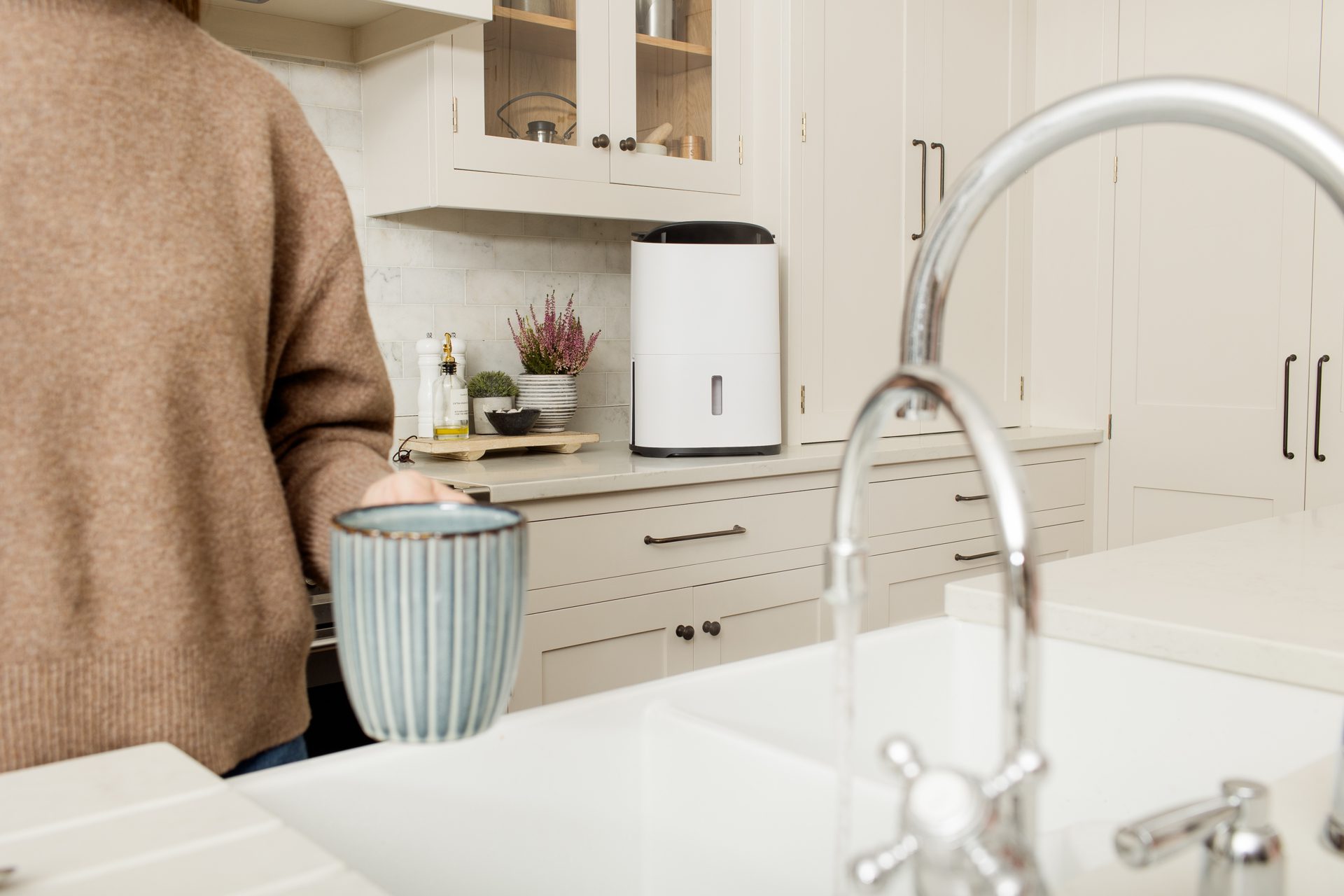
Let’s summarise the desiccants vs compressor dehumidifier debate, each is useful in different applications:
Desiccant
Compressor
Effective in which temperatures:
Desiccant:
Works well in all temperatures and are the recommend dehumidifier below 10°C
Compressor:
Only effective in spaces over 10°C, performs best at 16°C and above
Does it provide heat to the room?
Desiccant:
Yes, desiccants emit some additional warmth which can be useful
Compressor:
No, this does not provide additional heat
Are they effective when drying washing?
Desiccant:
Yes, actually optimal as they extract moisture and add warmth to drying laundry
Compressor:
Yes, these will successfully help you to dry washing indoors
Laundry mode available?
Desiccant:
Most Meaco dehumidifiers come with Laundry Modes. Check the technical specifications for more information.
Compressor:
Most Meaco dehumidifiers come with Laundry Modes. Check the technical specifications for more information.
Which is lighter in weight?
Desiccant:
Lightest and therefore easiest to move
Compressor:
The equivalent sized compressor dehumidifier will weigh an additional 6kg, however lots come with castors
Which has a cheaper cost to run?
Desiccant:
Desiccants are more expensive to run, our MeacoDry DD8L costs 9p / kWh
Compressor:
Compressors are cheaper as a general rule. Our MeacoDry Arete® One 10L costs just 4p / kWh
Which dehumidifier uses less electricity?
Desiccant:
Around 330 watts at 20°C and 60%rh
Compressor:
Between 150-260 watts depending on the size at 20°C and 60%rh
Which generates the lowest noise levels?
Desiccant:
Traditionally quieter, the 8L desiccants in our range are 39 dB
Compressor:
The latest ABC and Arete® dehumidifiers are Quiet Mark accredited, measuring 35dB and above.
Which has the longest lifespan?
Desiccant:
Lifespan is dependent on a lot of factors including the environment and how well the dehumidifier is looked after
Compressor:
Lifespan is dependent on a lot of factors including the environment and how well the compressor is looked after, however, our Arete® range is the only range to come with a free 5 year warranty
Which has the best sizing options?
Desiccant:
Because of the mechanics, desiccants only come in 8L however this is suitable from a 1 bed flat to a 5 bed house
Compressor:
Multiple sizes available for different sized houses
Which can clean the air as well as dehumidify?
Desiccant:
Dehumidify only
Compressor:
Our MeacoDry Arete® One and Meaco Low Energy range are combined dehumidifiers and air purifiers
Best application
Desiccant:
Lower temperatures or places you may want some extra warmth. For example, an unheated conservatory.
Compressor:
Applications over 10C. These are cheaper to run and available in more sizes. Great for home living.
You can see that it is not as simple as many dehumidifier brands make out when they claim that a desiccant dehumidifier – or a compressor dehumidifier is best. This is because they are normally biased towards one or other of the technologies. Hopefully the above will help – but if you are still not sure what’s best for you, give us a call on 01483 234900, email customerservice@meaco.com or comment below and we will be happy to talk it through with you.
Browse our ranges: Compressor Dehumidifiers, Desiccant Dehumidifiers
Products featured: Meaco ABC 12L , Arete® One 10 and 12L Dehumidifier and Air Purifier, Meaco DD8L, Meaco DD8L Zambezi, Meaco Low Energy Dehumidifier 12L




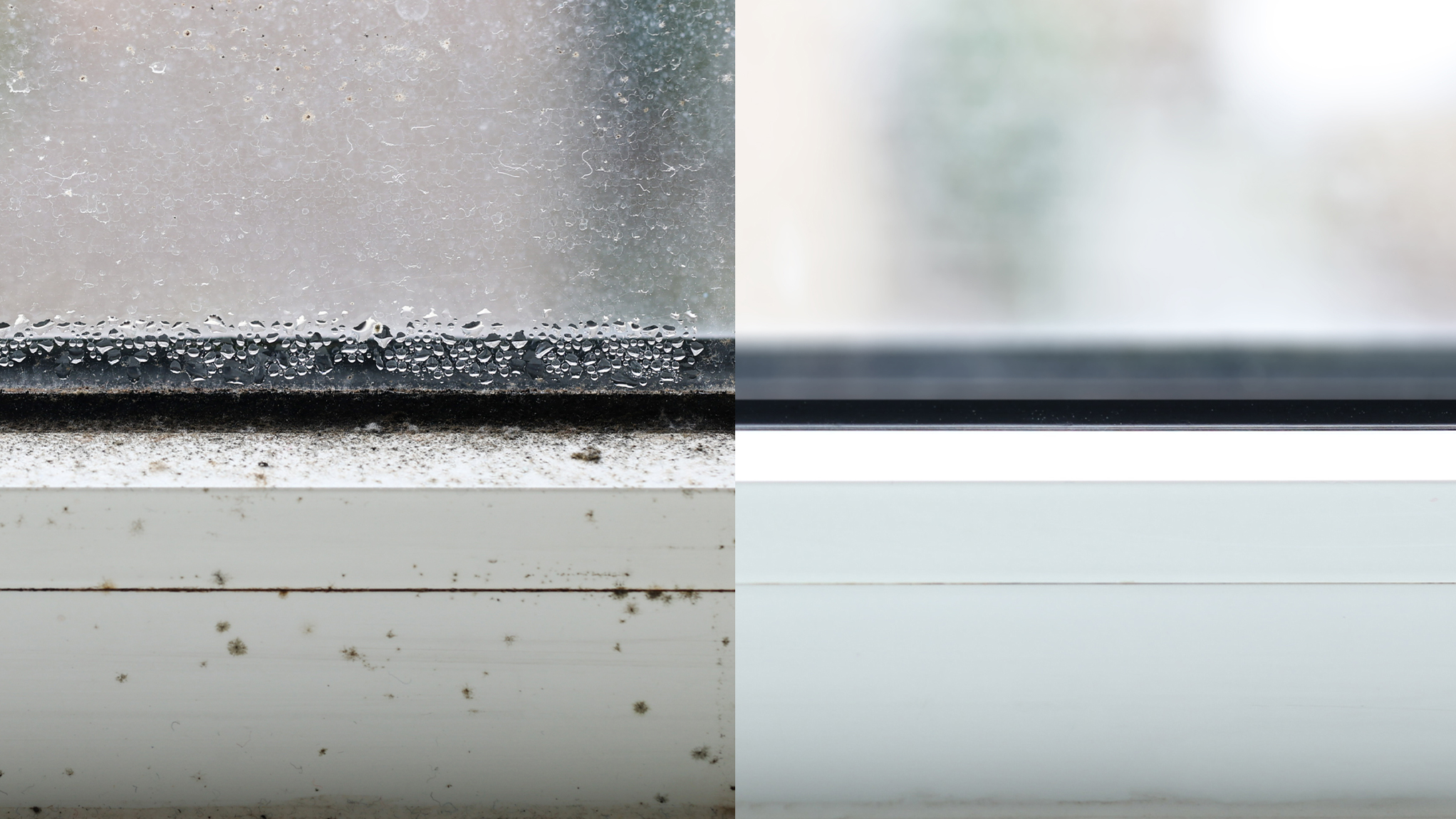

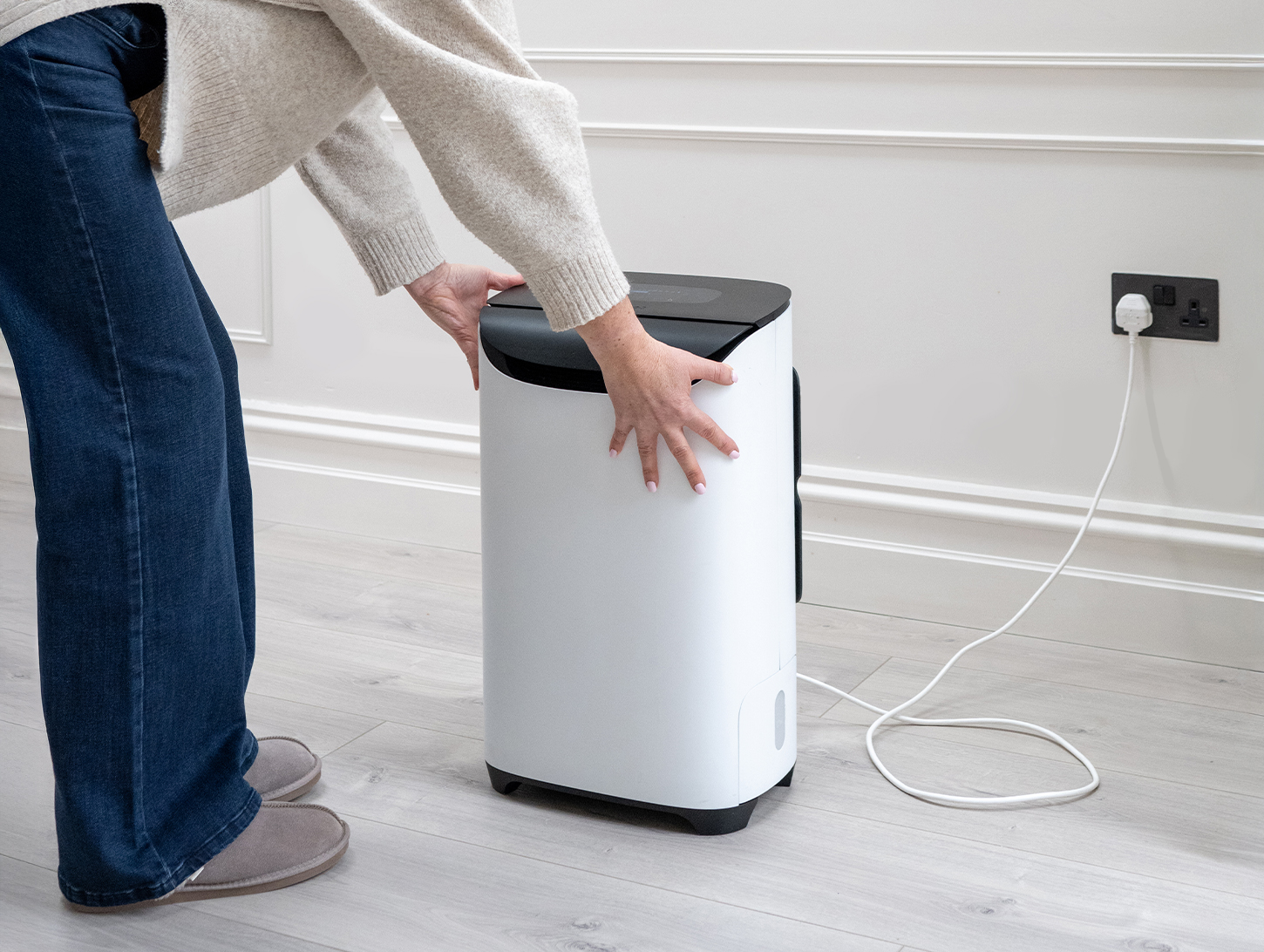
252 responses
i want to buy a dehumidifier for my sailboat so when i am not on it it doesn’t mould up. it has 4 small cabins, is approx 14 m long, 4m wide and 2 m high , crudely calculated to 112 cubic metres ( but more likely 70 actual) could you tell me which one would be best for a sailboat.
usual internal temperature is 22 degrees and relative humidity today is 80%. power is provided by solar charged batteries and an inverter. thanks. Chris
Chris,
Thank you for your message, the problem that you will have is running a dehumidifier offer the inverter. All compressor dehumidifiers, regardless of where you buy it from, will have a start up surge that is three times the running current and the inverter will probably not be able to handle it.
As long as the temperature on board the boat stays warm then a compressor machine would be fine and would use less wattage than a desiccant dehumidifier. The space is not huge so any of the compressor dehumidifiers would be fine. Look out for the new MeacoDry ABC range coming this summer because they will the quietest yet which will help in a small space.
Good luck.
regards
Chris
Hi can you please help. I’ve been looking for a dehumidifier for a while but don’t know which model is best for me I was going to buy the platinum range meaco 25l low energy but then realised I cannot use this in my cellar as it is below 10 degrees. upstair in my house I don’t really need heating on the temperature is around 16 c.
. I’m looking for a model that will remove condensation and uses low energy and I can use it all year round. Could you please advise which model will be best for me thank you.
I have read a few reviews on this model but not sure on the energy costs.
WDH-316DB 16 LITRE DEHUMIDIFIER FROM SCREWFIX?or the Meaco Dd8l dehumidifier
Or any model you might think will be good for me thank you.
Azra,
If it is just for the basement then the 20L Low Energy or the 25L Low Energy would be fine as long as the basement is not going to spend long periods of time below 10°C. This would give you the best of both words, low running costs and good water removal from the air. These machines would also be fine around the rest of the house should you decide to move them about.
Unfortunately Screwfix do not publish much data on their dehumidifiers running costs and performance in different conditions so it is hard to compare.
regards
Chris
can you vent a dessacant into a regular du?i cant vent outside.no windows
Our domestic dehumidifiers do not require any venting at all.
Chris, we have 5 bed house and third floor (which is unoccupied) suffers from condensation clothes smell and shoes get growth been using the 360 Areo. The house is usually kept warm ..and set to max out at 22° however heating goes off at 10 pm and is set to come during the week at 2.30 pm in time for kids to come ..to be fair takes a fair few hours to get to 20° bring a large house.
In any event third floor whilst warm enough ….cools down a lot faster and I presume during the night quiet a lot as we appear to not have any other issues other than one the main big rooms on third floor ….I’ve bought a 10 litre meaco ….a) should just place it in that room b) is a condenser unit the best option ….I would like to keep costs and noise down
I am happy to exchange for more expensive model if necessary.
P.S. I know we should nt however during winter months we dry clothes on radiators there 5 ppl in the house …daily showers number of baths ..etc ..I’m sure you get the picture
Jay,
Sorry for the slow reply, your message got lost in a spam filter.
The 10 litre is a bit small for a five bedroom house but my advice would be put it somewhere central in the home and leave all the internal doors open and you will notice a massive difference in the long run.
regards
Chris
I want to buy a dehumidifier for a 4 bedroom house, where two bedrooms, kitchen, utility room and bathroom are on the ground floor. I have a large amount of condensation in the north facing bedrooms. And a small amount of mould has just started growing. The house can get cold as it is in a village.
Which dehumidifier would you recommend. Many thanks for your help.
Gina,
Unless the house is below 16°C then it sounds like a perfect application for the Meaco 20L (below 16°C then go for the Meaco DD8L).
regards
Chris
Hi,
I have a problem with condensation on windows and would like to know where in the house to place a dehumidifier at first. The condensation is worst upstairs in the mornings (windows are quite wet and a little mould on the sills which I clean off). It is a terraced 2-bedroom so quite a small house. Also, how long should they be left on for as I don’t want to disturb anyone’s sleep?
Thanks,
Kevin.
Kevin,
We have a Meaco 20L on our landing with four bedrooms around it and you cannot hear it at night and the children never complain. For your size home I would go for a Meaco DD8L which is even quieter. Pop the dehumidifier upstairs to start with and see how you get on.
I always recommend thinking about where the water is coming from (cooking, bathing, showering, laundry etc) and to try and put the dehumidifier closer to source. Maybe you have a shower room with no ventilation or a kitchen without an extractor above the hob? In houses with no tumble dryers then the laundry drying is the problem.
Hope this helps.
Chris
I want to buy a desiccant dd8l for my conservatory but have limited space It will only stand against a wall but have been told I cant do this. Can you advise me as to whether I can get one that does stand near wall? We could wall hang if that’s a possibility or turn it round so the front is against the wall. Many thanks for any help you can give Trevor
Trevor,
For a conservatory select the Meaco DD8L dehumidifier and just turn it around, you can then push it right up against the wall.
http://www.meaco.com/proddetail.php?prod=DD8L
Chris
Hi there,
I am trying to compare different dehumidifiers in terms of power consumption.
So who is the winner?
Thanks
Andinet,
Power consumption is very important and is an indication of quality. But you can only compare compressor dehumidifiers with compressor dehumidifiers and desiccant with desiccant and must not fall into the trap of comparing compressor with desiccant.
At 355 watts our Meaco 20 litre is very energy efficient and the unique Meaco control logic helps to save even more electricity usage which is very important.
If you could tell me a little bit more about your application then I could point you in the right direction to help you select the correct dehumidifier.
Chris
My rented cellar is damp with mould growth. I store items not needed immediately in cardboard and plastic containers. The mould is mainly on the brick walls, but grows on some of my items stored too.
Which type of dehumidifier should I buy and will this control the mould once I’ve cleaned if off?
Thanks
Depends as to whether the temperature will drop below 15°C or not? If the temperature stays above that point then the Meaco 20L would be the best bet, below that point and a desiccant dehumidifier like the DD8L Junior should be your dehumidifier of choice.
Hi there, could you tell me please if I can use a desiccant dehumidifier with a separate timer. I’ve seen some instructions which say you shouldn’t turn off a dehumidifier until the fan stops, I think this is because its supposed to gradually cool down. I know it may be better to use it continuously but I’d like to use it a few hours a day.
Regards
Tony
Tony,
It is best not to use a timer for two reasons, one to let the units cool as you say and two because you cannot guarantee that the relative humidity will not rise when the dehumidifier is off, the organic material in the house absorb the moisture and then the dehumidifier is turned on later and does nothing because there is no moisture in the air (but the organic material will stiff suffer).
This post will help explain in greater detail – http://www.meaco.com/blog/?p=653
regards
Chris